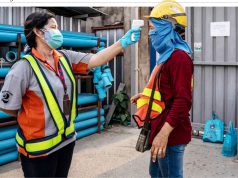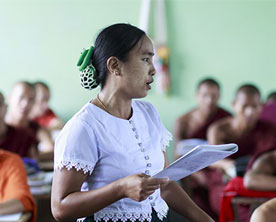The ASEAN Financial Inclusion Con- ference was hosted in Yangon on 29- 30 October, 2014 by the Myanmar Ministry of Finance and presided over by U Win Shein, Minister of Finance. Minis- ter for the President’s Office, U Soe Thein, was also in attendance. This was an event of some importance and while the matters discussed at the Conference were far-rang- ing, an issue that received considerable attention and which has particular signifi- cance for Myanmar’s economic and social development is the importance of micro-in- surance as a risk reduction mechanism to assist the poor, complementing the reach of microfinance and enhancing the prospects of attaining financial inclusion goals. Con- tributors demonstrated a heightened aware- ness of the significance of micro-insurance in this context and largely echoed the views expressed in proceedings at the Myanmar Insurance Summit, chaired by Deputy Min- ister, Dr Maung Maung Thein of the Min- istry of Finance, which took place on 28-29 September this year, also in Yangon.
We can articulate the concept of micro-in- surance as the protection of low-income people against specific perils in exchange for…(a premium) proportionate to the likeli- hood and the cost of risk involved (Churchill, 2007). While most poor people lack access to insurance of any kind, there is strong ev- idence that risk and vulnerability to risk are themselves fundamental causes of underde- velopment and that micro-insurance com- plements micro-loans and micro-savings in addressing such development obstacles. Generally, micro-insurance cover is concen- trated in the areas of life, agriculture & live- stock, health, property and accident, with the vast bulk of cover being concentrated in the first two categories. Designed appro- priately, micro-insurance promotes high- er-return economic production, significant shifts in the composition of agricultural in- vestment towards higher return – higher risk crops being attributed to the impact of mi- cro-insurance. Studies of micro-insurance projects in many developing countries also reveal enormous potential for micro-insur- ance to yield major health and other social benefits (with consequent positive economic impacts), demonstrated by outcomes such as those reported from programs in the im- mediate region, including Vietnam (Pham et
al (2008) and Bangladesh (Werner (2009). While there has been some take-up of mi- cro-insurance in the Asia-Pacific Region, the extent of its penetration varies dramat- ically, with Myanmar, Laos and Papua-New Guinea being standouts, with zero coverage recorded. Unsurprisingly, the number of clients is greatest in India and China, but the proportion of the population with mi- cro-insurance coverage is by far greatest in the Philippines, at over 21%. Even the level of market reach in countries such as Thai- land (14% of the population) and Bangla- desh (>6%) (MunichRe Foundation, 2014) suggests serious levels of unmet need for micro-insurance in Myanmar. Looking at
insurance generally, only 2.3% of the pop- ulation hold insurance cover of any kind, against 4.4% across Asia as a whole and 25% in neighbouring Thailand.
Myanmar could benefit from formal micro- insurance. To assess the need for microin- surance from a potential user perspective, BC Finance (BCF) recently canvassed the views of nearly 600 current clients about the types of risks that were of concern to them and about the potential of micro-insurance to assist them. Since the respondents were urban or peri-urban clients, the results can- not be claimed to reflect the views of those in the highly significant rural sector, although evidence from studies of other countries in dicate that death and agricultural/livestock micro-insurance are the key risks of concern for rural dwellers. Of those surveyed by BCF, 29% were concerned about the costs and oth- er economic impacts of death, with 18% iden- tifying healthcare as an issue and 17% citing fire and accident risks. An interesting fact revealed by the survey was that only 3% of re- spondents cited the risk of theft as a concern, surely something that speaks volumes about the perceived honesty of Myanmar people. Would BCF’s clients buy micro-insurance to cover the risks with which they were con- cerned, were appropriate products on offer at an acceptable price? 83% of respondents indicated that they would, while 16% were unsure. In terms of economic activity, 37% suggested that they would invest more in their business if micro-insurance products were available to mitigate risk, suggesting that the actual economic boost from broadly available micro-insurance could be some- thing quite substantial. Given appropriate micro-insurance products, an efficient dis- tribution system and effective consumer education programs, the potential benefits to the country may be even greater than the most optimistic prediction.










